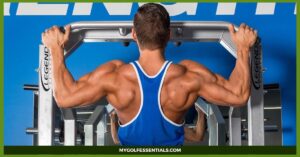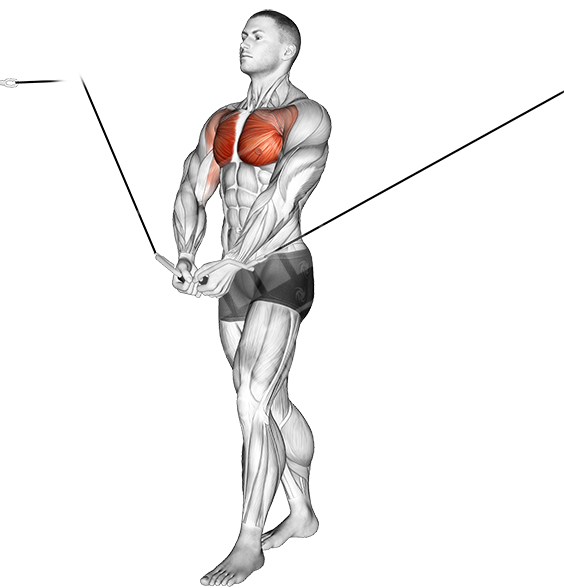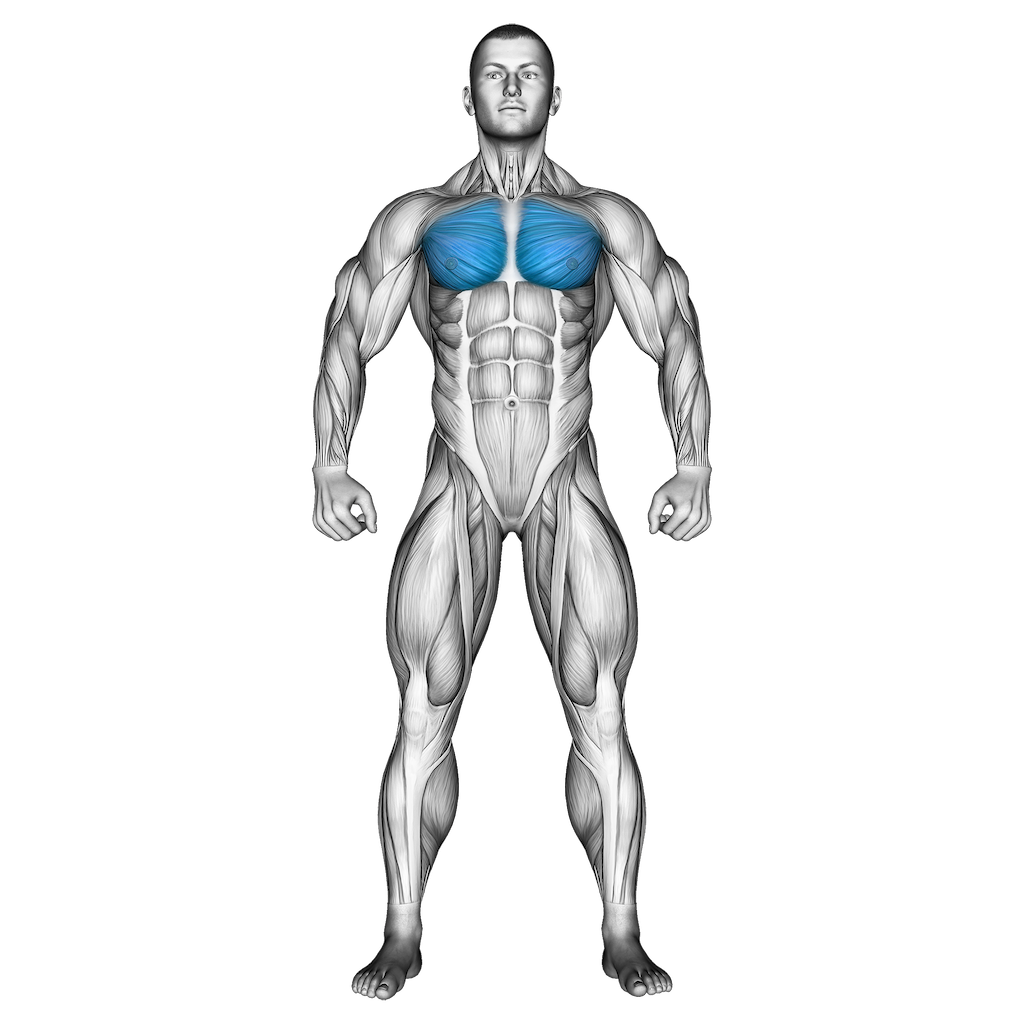Upper Body Workout

Are you looking to strengthen and tone your upper body with an upper-body workout? Whether you’re a beginner or ready to take it up a notch, an effective upper-body workout can be just what you need to reach your fitness goals.
Here, we cover how to make the most of your time in the gym with an efficient routine targeting all major muscle groups. With customizable exercises and mindful rest times, we’ll help you get those arms and shoulders strengthened and sculpted with no wasted movements! Read on for everything you need to develop that much sought-after toned look.
Introduce Upper Body Workouts
Upper body workouts offer incredible benefits, from enhancing your overall strength and improving posture to boosting your metabolic rate. They target key muscle groups, including your biceps, triceps, shoulders, chest, and back, helping you develop a proportional and strong physique.
However, these workouts also present challenges, particularly for beginners. It requires consistent effort, proper form, and balance of different exercises to effectively work these muscles without risk of injury. Overcoming these obstacles is a rewarding part of the journey toward a healthier and more toned you.
Benefits of Upper Body Workouts
Upper body workouts offer numerous benefits that extend beyond aesthetics. They improve your posture, balance, and functional strength, thus enhancing your ability to perform everyday activities with ease.
These workouts also boost your overall metabolism, helping you burn more calories even while at rest. Furthermore, they can enhance your athletic performance, enabling you to excel in various sports and outdoor activities.
Challenges in Upper Body Workouts
Despite these benefits, upper-body workouts can be challenging for many. The difficulty often arises from a lack of proper form, imbalance in muscle development, or insufficient rest between sets.
A common mistake is focusing too much on a single muscle group, which can lead to an imbalance in strength and might increase the risk of injury. It’s crucial to approach these workouts with knowledge and patience to ensure safe and effective results.
Warm up your body to get ready for the workout
Before diving into any intense upper body workout, it’s imperative to prepare your body with some light stretching exercises. This step is often overlooked, but it’s vital for promoting blood circulation, increasing body temperature, and preparing your muscles for the exertion to follow.
A good warm-up routine might include arm circles, shoulder rolls, or gentle yoga poses like the downward dog and cobra pose, all aimed at loosening up your shoulder, chest, and back muscles.
Furthermore, warming up is not just about physical preparation; it also helps mentally prime you for the workout session. It provides a moment to focus on your breathing, set your intentions, and mentally prepare for the challenge ahead.
By allocating this time to connect with your body, you can enhance not only the efficiency of your workout but also your mind-body connection.
Add push-ups to your routine for improved arm and chest strength
Push-ups are a classic exercise that should be part of any upper-body workout. They are a compound exercise, meaning they work multiple muscle groups at the same time. Primarily, they strengthen the chest, shoulders, and triceps but also engage the core and lower back.
Start in a high plank position, keeping your body in a straight line from head to heels. Lower your body until your chest almost touches the floor, then push back up to the starting position. It’s crucial to maintain proper form to maximize the benefits and minimize the risk of injury.
They can be modified to cater to your fitness level, from knee push-ups for beginners to one-arm push-ups for advanced exercisers. In addition to building strength, push-ups also improve muscular endurance and contribute to better overall fitness. Implementing push-ups in your routine can help sculpt your upper body, enhance your postural support, and even boost your cardiovascular system due to the fast-paced nature of the exercise.
In terms of difficulty, they might require some practice to perfect the form and build up the necessary strength, but the payoff is absolutely worth it. Add push-ups to your routine and watch as they transform your upper body workout.
Beginner Upper Body Workout
Starting an upper body workout as a beginner may seem daunting, but remember, every fitness journey begins with a single step. A beginner’s routine should be simple, manageable, yet effective, targeting all the major upper body muscle groups without causing undue strain.
It’s also important to maintain proper form and take adequate rest between sets to avoid injuries. Let’s walk you through a beginner’s upper body workout, carefully designed to help you gradually build strength and confidence in your fitness journey.
Chest push-up
The chest push-up is a variation of the traditional push-up that primarily targets the chest muscles or pectorals. Start in a high plank position, with your hands slightly more than shoulder-width apart.
Lower your body until your chest is just above the ground, then push back up to the starting position, focusing on using your chest to power the movement. It’s important to maintain a straight line from your head to your heels throughout the exercise to prevent any strain on your back.
As a beginner, you might find it challenging to execute full chest push-ups. Don’t be discouraged – modifications like knee push-ups or inclined push-ups (using a bench or step) can help you build strength gradually.
Consistency is key; with regular practice, you’ll notice improvements in your strength and will be able to perform the standard chest push-up over time. Remember, the journey to fitness isn’t a sprint; it’s a marathon.
Chest flies
Chest flies are an effective exercise for isolating and strengthening the chest muscles. Start by lying flat on a bench, with your feet firmly on the ground and a dumbbell in each hand. Extend your arms straight above your chest, keeping a slight bend in your elbows to avoid strain.
Lower your arms out to the sides in a wide arc until you feel a stretch in your chest, then bring the dumbbells back together at the top. Control is key with chest flies, so don’t rush the movement or use weights that are too heavy.
Maintaining control and slowing down the movement helps to ensure that the muscle fibers in the chest are properly engaged and worked during the exercise. This can also significantly reduce the risk of injury.
Over time, you will notice improvements in the size, strength, and definition of your chest muscles. Remember to pair this exercise with a balanced diet and adequate rest for optimal results.
Lat pulls
Lat pulls are an excellent exercise for targeting the large muscles in your back, known as the latissimus dorsi or “lats.” Begin by positioning yourself on a lat pull-down machine with your knees bent snugly under the pads.
Grasp the bar with an overhand grip, hands slightly wider than shoulder-width apart. Pull the bar down smoothly to your upper chest, squeezing your shoulder blades together at the end of the movement. Then, slowly let the bar return to the starting position, fully extending your arms and feeling a stretch in your legs.
Incorporating lat pull up bar into your upper body workout routine can considerably improve your back strength and posture. This exercise not only engages your lats but also works your shoulders, biceps, and core, providing a comprehensive upper-body workout.
As with all exercises, start with a lower weight to ensure proper form, progressively increasing the weight as your strength improves. Remember, the key to effective strength training is consistency, focus, and dedication to proper technique.
Back extensions
Back extensions are an effective exercise for strengthening your lower back, glutes, and hamstrings. Begin by positioning yourself on a back extension bench, with your feet firmly planted and your upper thighs or hips against the padding.
Fold your arms across your chest and bend forward at the waist, then raise your body until your back is in line with your legs. Ensure your movements are controlled and steady, as sudden jerks can put undue strain on your lower back.
Integrating back extensions into your upper body workout routine can significantly improve your posterior chain strength, contributing to better posture and reduced risk of back injuries.
This exercise also plays a critical role in enhancing core stability, leading to improvements in overall fitness and performance in various sports and activities. Remember to always prioritize form and control over the amount of weight used for a safe and effective workout.
Bicep curls
Bicep curls are a staple in upper body workouts, specifically targeting the biceps brachii muscle. Start by standing up straight, holding a dumbbell in each hand with your palms facing forward. Keep your elbows close to your body and slowly curl the weights while contracting your biceps, lifting the dumbbells to shoulder level.
Lower the dumbbells back down to your side, maintaining control throughout the movement. Always remember to keep your upper arms stationary, moving only your lower arms during this exercise.
Incorporating bicep curls into your fitness routine will not only enhance your arm strength but also improve your grip, which is beneficial for many daily activities and other workouts. Additionally, strong biceps can contribute to overall upper body balance, stability, and symmetry.
When performing bicep curls, ensure to use weights that challenge your muscles but are still manageable enough to maintain proper form. Consistency and gradual progression are keys to achieving long-term fitness goals.
Bent arm lateral raises
Bent arm lateral raises are a fantastic exercise for targeting your deltoids, the muscles that give your shoulders their rounded, sculpted appearance. Begin by standing with your feet hip-width apart, a dumbbell in each hand.
Bend your elbows to a 90-degree angle, then raise your arms out to the sides until they’re at shoulder level. Lower them back down, controlling the movement to maximize muscle engagement. Always keep your back straight and core engaged for stability throughout this exercise.
Adding bent arm lateral raises to your regimen can significantly improve your shoulder strength and mobility, leading to better performance in other upper body exercises. Moreover, strong and toned deltoids can enhance your physique, contributing to a balanced and defined upper body appearance.
As with all exercises, remember to prioritize form and control and gradually increase weights as your strength improves. Your dedication to consistent training and proper technique will yield the best results.
Overhead presses
Overhead presses are a fundamental component of any upper body workout, primarily focusing on the deltoids and triceps. To perform this exercise, start by standing with your feet shoulder-width apart. Hold a dumbbell in each hand at shoulder level, with your palms facing forward.
With a controlled movement, push the weights up until your arms are fully extended above your head, then slowly lower them back to the starting position. Ensure your back is straight and your core is engaged to maintain balance and prevent injury.
Incorporating overhead presses into your fitness routine can substantially enhance shoulder and arm strength, improving performance in upper body activities. In addition to working the deltoids and triceps, this compound movement also engages the chest and core muscles, making it a comprehensive upper-body exercise.
As always, prioritize proper form and control over the amount of weight, gradually increasing the load as your strength improves. Engaging in this exercise consistently, paired with a balanced diet and adequate rest, will yield noticeable results over time.
Triceps kickbacks
Triceps kickbacks are a highly effective exercise for targeting the triceps brachii, the muscle located at the back of the upper arm. Begin this exercise by holding a dumbbell in each hand and bending forward slightly at the waist, keeping your back straight.
Bend your elbows so your upper arms are parallel to the floor, then extend your forearms back until your arms are straight, squeezing your triceps at the top of the movement. Lower the weights back down, controlling the movement to maximize muscle engagement. It’s essential to keep your upper arms stationary, moving only your forearms during this exercise.
Integrating triceps kickbacks into your upper body workout routine can significantly boost your arm strength, particularly improving the definition and tone of the upper arm. Strong triceps are crucial for stability and performance in other upper body exercises, and they also contribute to a balanced, sculpted arm appearance.
As with all exercises, prioritize form and control, starting with a weight that allows you to perform the exercise correctly and gradually increasing as your strength improves. Consistency and proper technique are vital for achieving the best upper body workout results.
Muscle Growth Upper Body Workouts
Here is the exercise regimen for muscle growth, rewritten in bullet form:
- Pull-Up: Perform 3 sets, with 8-12 repetitions per set.
- Dumbbell Bench Press: Perform 3 sets, with 8 repetitions per set.
- Chest-Supported Row: Perform 3 sets, with 15 repetitions per set.
- Machine Chest Flye: Perform 3 sets, with 12 repetitions per set.
- High-Incline Dumbbell Lateral Raise: Perform 3 sets, with 12 repetitions per set.
- Cable Curl: Perform 3 sets, with 12 repetitions per set.
- Cable Overhead Extension: Perform 3 sets, with 12 repetitions per set.
- Cable Triceps Pushdown: Perform 3 sets, with 12 repetitions per set.
- Trap Bar Shrug to Carry: Perform 3 sets, with 12 shrugs followed by a 50-foot walk per set.
Remember, the key to muscle growth is consistency, proper form, and a gradual increase in intensity over time. Tailor these sets and repetitions according to your individual capacity and fitness goals. Always consult with a fitness professional if you are unsure about the techniques.
Women’s Upper Body Workout
Here is the women’s upper body workout regimen, rewritten in bullet form:
- Dumbbell Bench Press: Perform 3 sets, with 15 repetitions per set.
- Dumbbell Flye: Perform 3 sets, with 15 repetitions per set.
- Chest-Supported Dumbbell Row: Perform 3 sets, with 15 repetitions per set.
- Dumbbell Reverse Fly: Perform 3 sets, with 15 repetitions per set.
- Dumbbell Shoulder Press: Perform 3 sets, with 15 repetitions per set.
- High-Incline Dumbbell Lateral Raise: Perform 3 sets, with 15 repetitions per set.
- Lat Pulldown: Perform 3 sets, with 15 repetitions per set.
- Straight-Arm Lat Pulldown: Perform 3 sets, with 15 repetitions per set.
- Cable Triceps Pushdown: Perform as many reps as possible (AMRAP) in 90 seconds.
- Cable Biceps Curl: Perform 3 sets, with 15 repetitions per set.
Remember, the key to a successful workout is consistency, proper form, and a gradual increase in intensity over time. Adjust these sets and repetitions according to your individual capacity and fitness goals. If you are unsure about the techniques, always consult with a fitness professional.
Finish with some stretching to cool down after the session
To conclude an upper body muscles workout, it is essential to incorporate stretching exercises to cool down. This helps alleviate muscle tension and enhance flexibility, promoting recovery and preventing injuries. Stretching exercises should be carried out systematically, targeting all major muscle groups involved in the workout. Some effective stretches include overhead tricep stretches, cross-body shoulder stretches, and chest stretches.
Remember, when performing stretches, maintain each stretch for at least 15-30 seconds, avoiding any bouncing or jerking movements. The stretches should induce a sensation of mild discomfort but not pain. Consistent practice of these stretching exercises will improve your flexibility over time, contribute to better workout performance, and assist in maintaining good postural habits. Always prioritize your safety and listen to your body’s signals.
FAQs
What are the benefits of upper body workouts?
Upper body training workouts can enhance the strength and endurance of muscles in your chest, back, shoulders, and arm straight. Regular training can improve your body weight balance, posture, and functional abilities for daily activities. Additionally, it can boost your metabolic rate, aiding weight loss and overall fitness.
How often should I perform these upper-body workouts?
The frequency of workouts depends on your individual fitness goals and capacity. As a general rule, incorporating upper body strength exercises 2-3 times a week with rest days in between can yield significant results over time.
Can beginners perform these upper-body workouts?
Yes, beginners can perform these workouts. It’s advisable to start with lighter weights and fewer sets and gradually increase the intensity as your strength improves. Always prioritize proper form and technique over the amount of weight lifted.
Is it necessary to perform the cool-down stretching exercises?
Yes, it is crucial to cool down after a workout to aid recovery and prevent injuries. Stretching exercises help alleviate muscle mass tension, increase flexibility, and improve your subsequent workout performance.
Do I need to consult a fitness professional before starting these workouts?
If you’re new to strength training or have any pre-existing health conditions, it’s advisable to consult a fitness professional. They can guide you to perform these exercises correctly and safely, tailoring the workout regimen to your unique capacity and fitness goals.
Conclusion
I hope this guide has helped you understand the basics of an upper-body workout. Remember to always prioritize your safety and listen to your body’s signals. Incorporate proper form and technique, adjust the sets and repetitions according to your capacity, perform cool-down stretches after every session, and consult a fitness professional if necessary.



